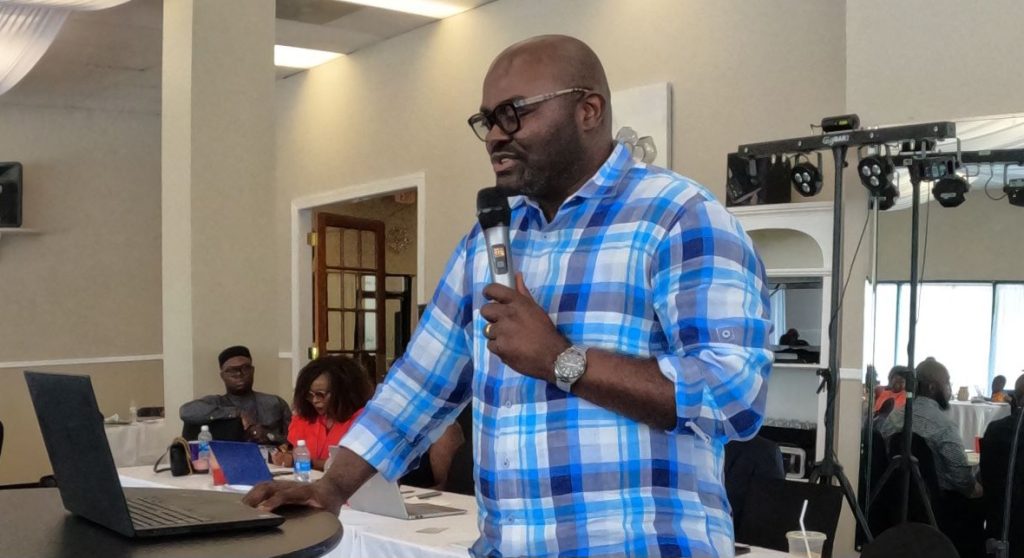In this insightful interview, we engage with Mola. Samuel Effange, the leader of the Fako America Projects Executing Team. As an enthusiastic project management practitioner, Mola. Effange sheds light on the crucial topic of Project Brief Documents and their significance in the realm of project planning. Through a series of questions, he shares valuable perspectives on the elements, best practices, and challenges associated with crafting effective Project Briefs. Furthermore, Mola. Effange provides a unique glimpse into how the Fako America Project Executing Team leverages Project Briefs to ensure transparency, successful project delivery, and efficient allocation of limited resources. Join us as we explore the expertise and insights of Mola. Samuel Effange in navigating the intricate world of project management.
We are thrilled to learn that the Arizona team is indeed preparing to unveil a comprehensive convention project brief in the coming days
Mola Samuel Moka Effange

Interviewer: Mola. Effange, could you explain the importance of Project Brief Documents?
Mola. Effange: Certainly. A Project Brief Document is a concise summary of a project, typically one or two pages long. It serves as a high-level presentation for stakeholders, providing an overview of project methods without going into detail. It acts as an agreement between the project team and stakeholders, ensuring transparency and clarity in project delivery.
Interviewer: What should a Project Brief include?
Mola. Effange: A Project Brief should include short descriptions of key elements such as objectives, purpose, risks, major deliverables, activities, timing, resources, participants, sponsors, cost, and project scope.
Interviewer: How does a Project Brief align with the objective of the Fako America Projects Executing Team?
Mola. Effange: The Fako America Projects Executing Team uses a Project Brief to transparently communicate how limited resources will be utilized. It helps organize and approve projects, measure success, and assess whether project objectives are achieved within budget and time constraints. The Project Brief also serves as a template for proposing future projects.
Interviewer: Given the nuance that exists between a project brief and a project plan, what are some best practices for creating a project brief?
Mola. Effange: Best practices for creating a Project Brief involve clear communication, brevity, and relevance. The document should be short and to the point, including supporting documents for clarification. Recommended sections for a good Project Brief are outlined in the Fako America Project Brief template.
Interviewer: Developing a Project Brief document can be challenging for beginners. How can project teams overcome obstacles in completing Project Brief documents?
Mola. Effange: To overcome challenges in creating Project Briefs for beginners, the Fako America projects executing committee has provided a template and publishes past projects as examples. The team also conducts presentations on using Project Briefs. For the Fako America 2024 Convention, a Project Brief is anticipated.
Interviewer: Certainly! Given the importance of project briefs, particularly in treating conventions as projects, the Arizona team is set to unveil a convention project brief in the upcoming days. As a final note, can we anticipate further insights into project briefs during the 2024 Arizona convention?
Mola. Effange: Absolutely, we are thrilled to learn that the Arizona team is indeed preparing to unveil a comprehensive convention project brief in the coming days. This document will provide detailed insights into the objectives, scope, and planning of the 2024 Arizona convention. It’s an excellent opportunity for attendees to gain a deeper understanding of how project briefs are applied in the context of large-scale events. We encourage everyone to stay tuned for further information and insights during the convention.
In conclusion, our interview with Mola. Samuel Effange, leader of the Fako America Projects Executing Team, has provided valuable insights into the significance of Project Brief Documents in project management. Mr. Effange encourages further exploration by directing readers to the projects section of the Fako America website, where they can find examples of Project Brief Documents, including the upcoming 2024 Fako America Convention. We appreciate Mola. Effange for sharing his expertise and invite readers to explore these resources for a deeper understanding of effective project planning.
Mola Julius Nammeh
Mola David Ikome Ngeve
9709 Byward Blvd, Bowie,MD 20721
fakoamerica@yahoo.com